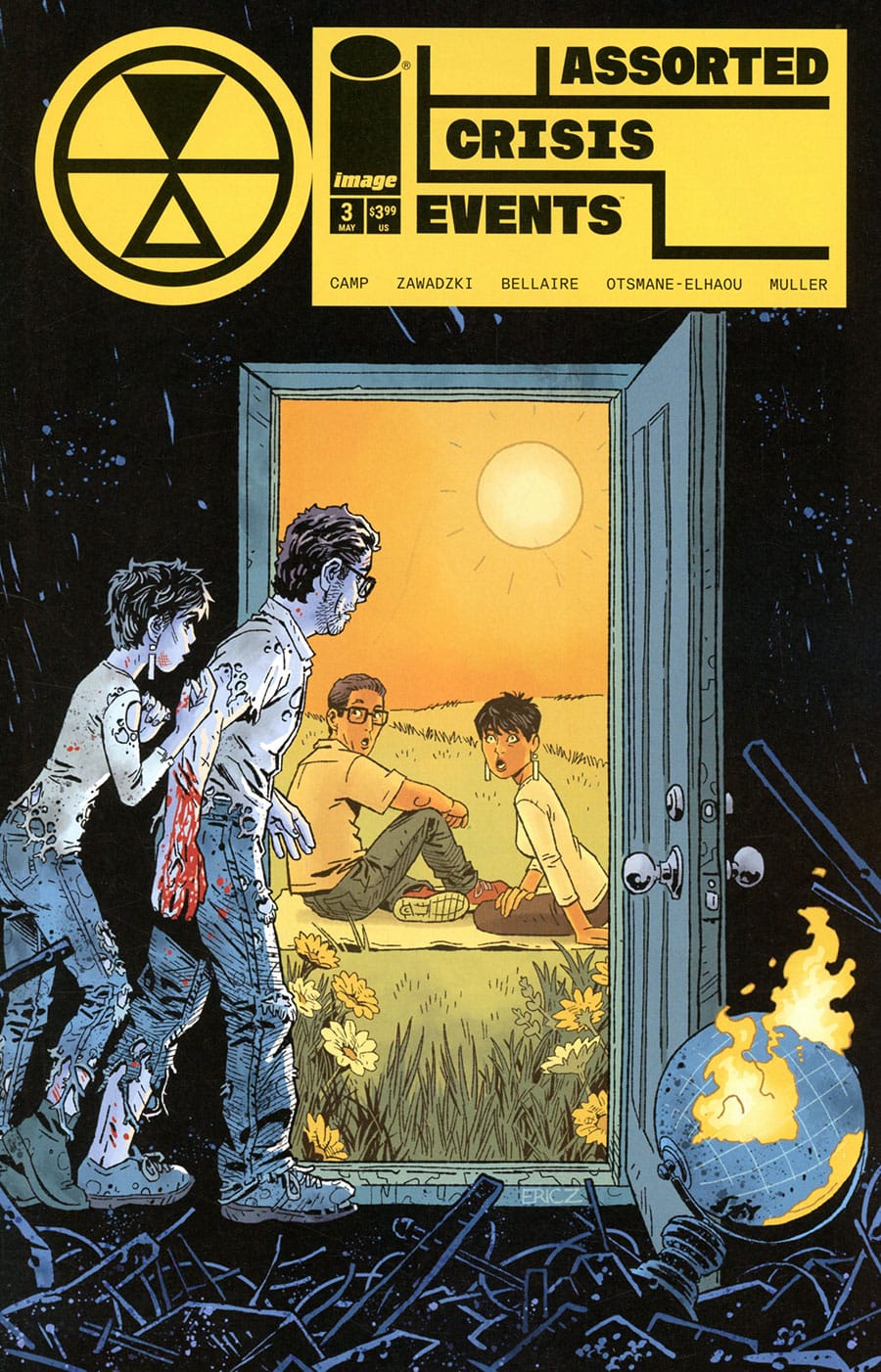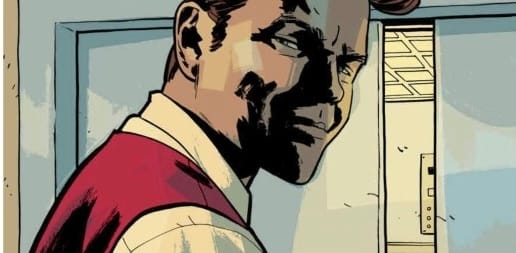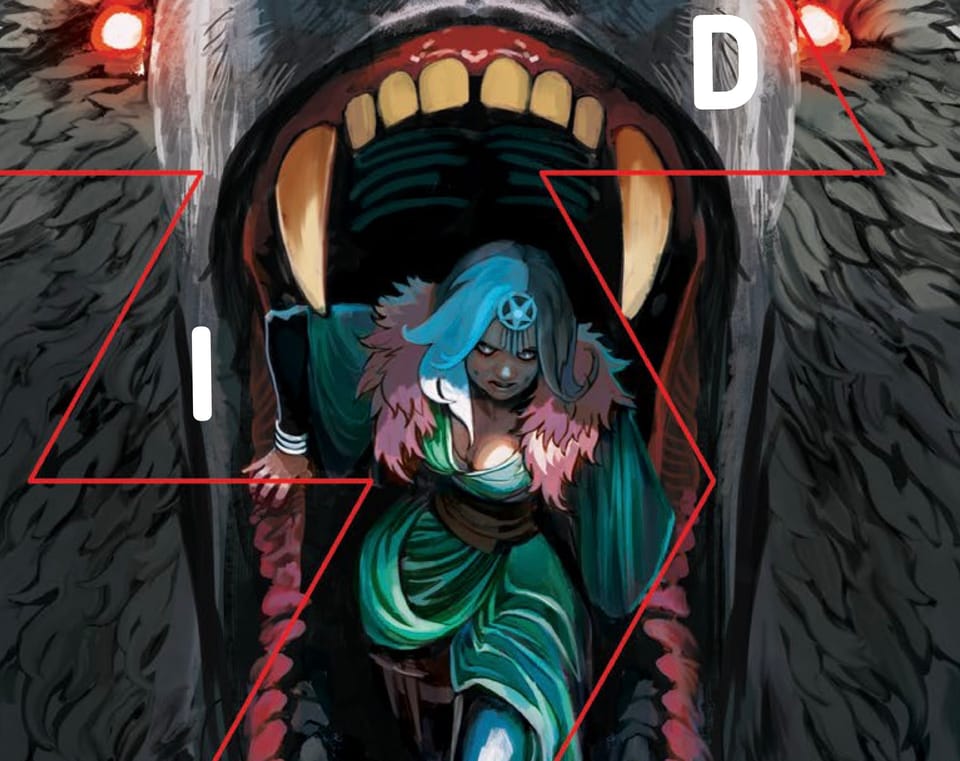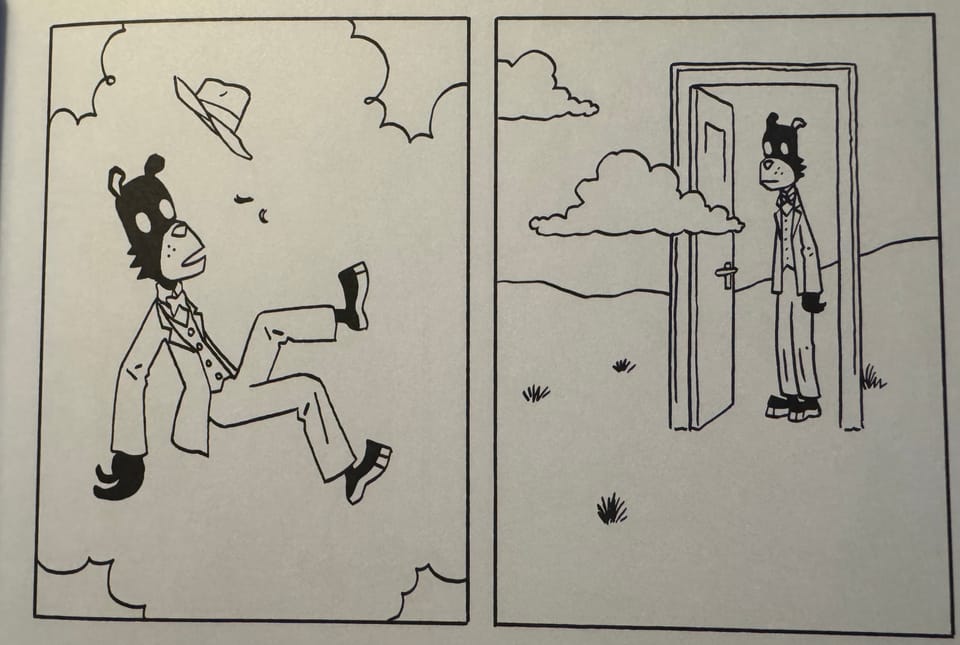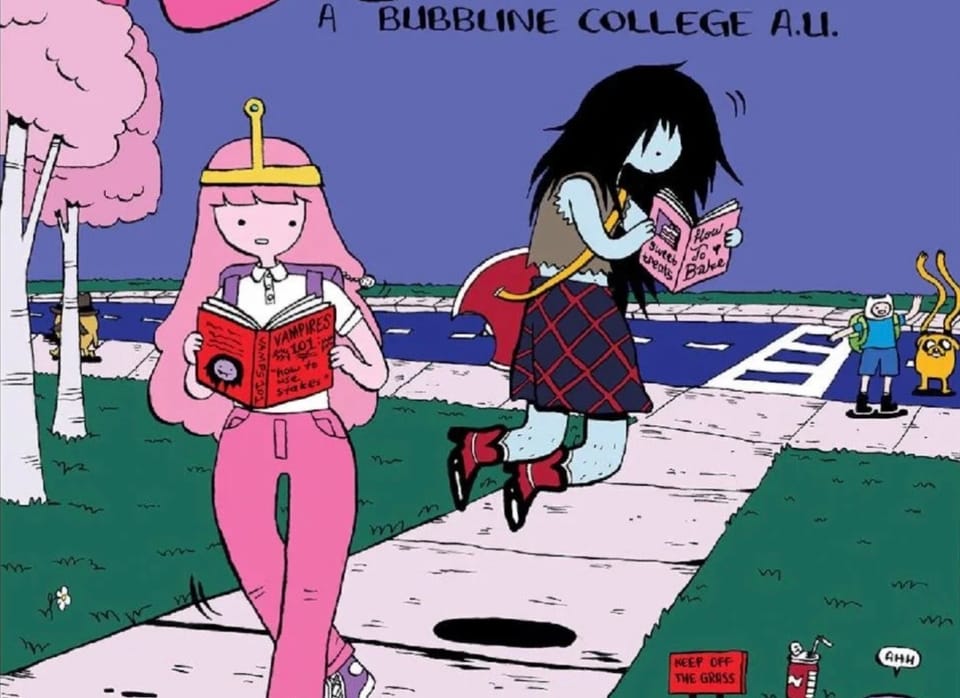More Than Just Another Crisis— a look at Deniz Camp and Eric Zawadzki’s Assorted Crisis Events #3
This comic is not apologetic about being a bit preachy.
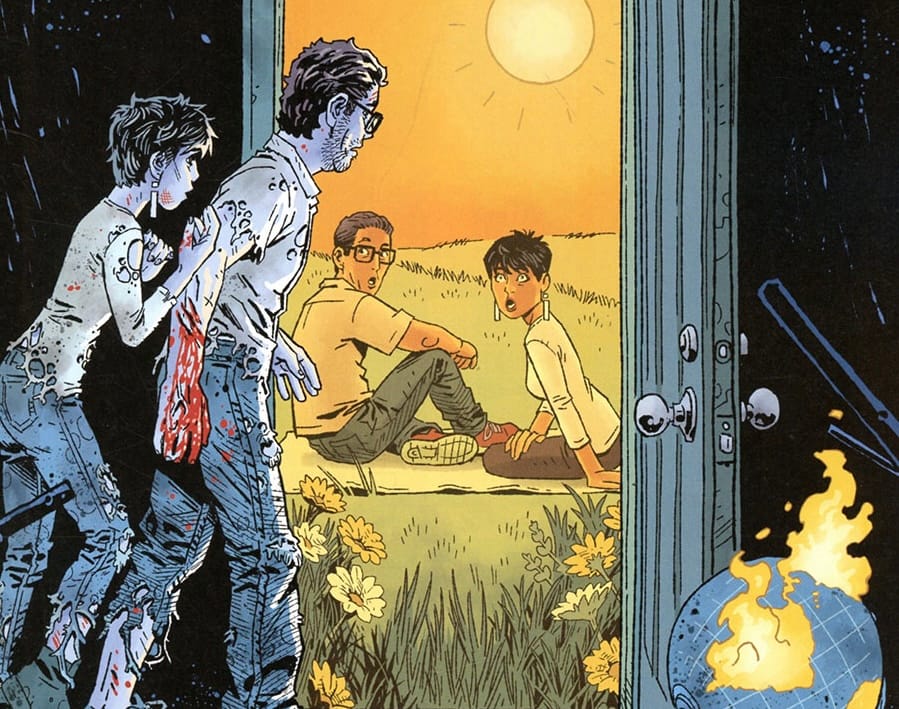
Deniz Camp has obviously read a lot of superhero comics and it seems like he thinks that most of them have done it wrong. The Ultimates #12 which just came out last week is built around that idea; this collection of superheroes who were trying to save the world hadn’t developed the right strategies. They had approached their world-saving like it was one kind of problem that they were tackling but it was another one. Assorted Crisis Events #3 is a lot like that; this issue seems to be an issue of alternate universe doppelgängers and one world invading another (read “invading” there in the light of the 2024 elections and what invading meant then) but that’s the wrong way to read it. That assumes that this is just another crisis event, like a Secret War or a Crisis on Infinite Earths. Those are the kinds of crises that we think about in comics— the kind that usually involve fisticuffs and someone winning. In comic book crises, someone always has to win. Right?
This issue is the tale of two cities; Hearth-One and Hearth-Two. If you’ve read any superhero event comics, that alone should start setting off some bells of what is going on here. Both Hearths are small towns, with 788 citizens, on two different earths. Describing Hearth-One, Camp writes “… like many towns across America, Hearth-One was stuck on a planet that was dying fast.” Camp and artist Eric Zawadzki recognize the damage that we’re doing to this planet’s climate and how we’re killing it. And for the other Hearth, Camp writes, “Heath-Two, like Hearth-One,” was stuck on a planet that was dying fast… but Hearth-Two was stuck on a planet that was dying faster.” So there’s no Doctor Doom or Anti-Monitor involved here. No Time Keeper or Beyonder. Just global warming, a crisis of our own making and it was happening on both Hearths. So through a magical door (both Hearths were founded by a traveling door-to-door door salesman) the residents of Hearth Two escaped their dying world and escaped to Hearth One, exchanging one dying world with another one.
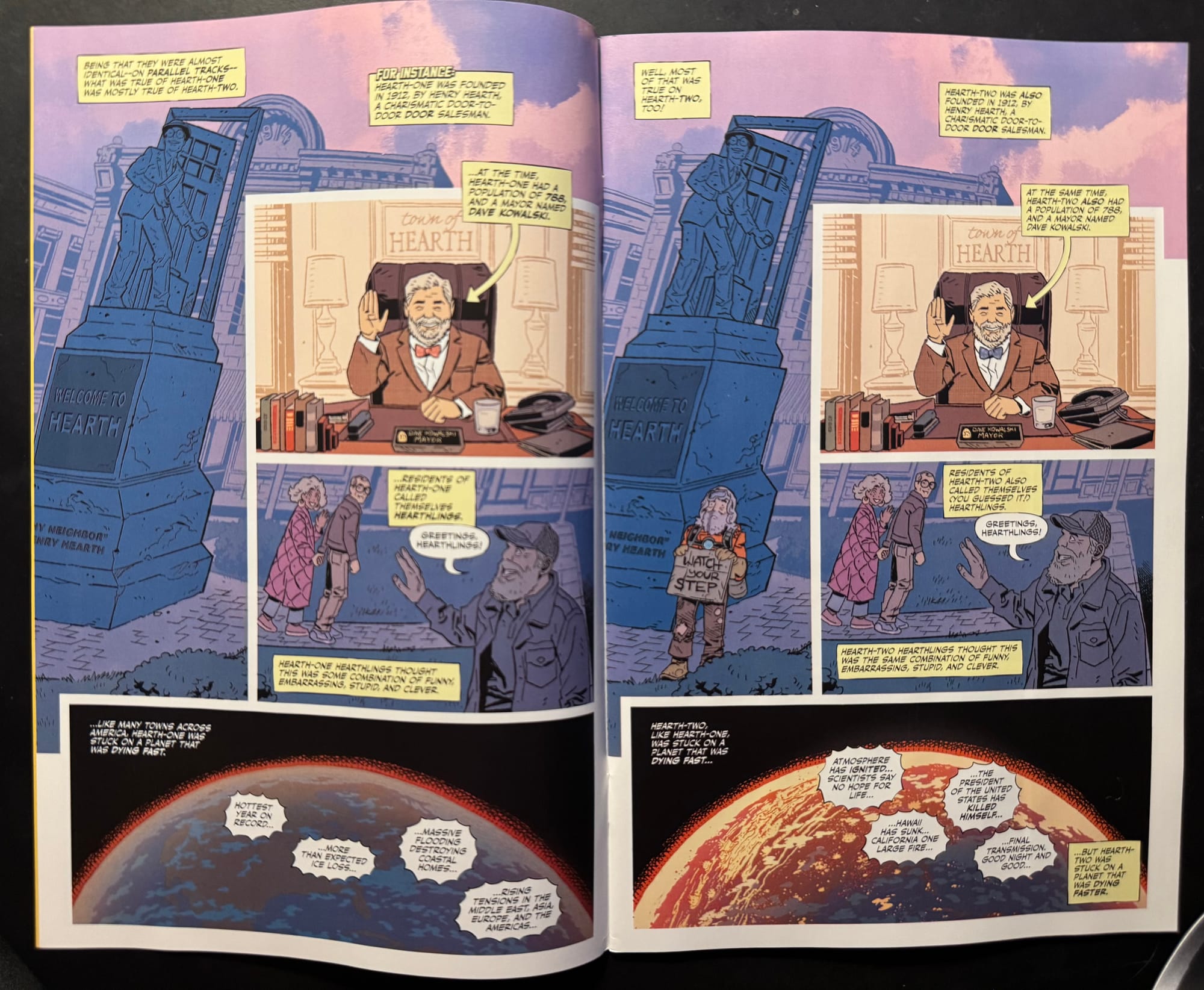
For the second issue in a row, Camp and Zawadzki build a very formal structure to their story. They establish the rules for telling these stories from multiple points of view (issue #2 exploring time and issue #3 exploring space) and adhere to them as ways of exploring their characters and the personal crises they are experiencing. In this latest issue, as they explore the lives of the people on Hearth-One and Hearth-Two, so alike because they are the same people but so different because their varying environments had so much effect on how they lived and survived, they use this a mirrored approach, with every other page alternating the viewpoints of Hearth-One citizens and Hearth-Two survivors. So we see one page from the perspective of a small-town family, successful and relatively safe. But then the next page is from the same family but from the dying world, survivors and refugees from a dead world. The panel layout and even the narration both mirrored as well.
Bouncing back and forth between the Hearth-One and Hearth-Two perspectives, Zawadzki repeats the panel layouts of the alternating points of view. He’s drawing the same characters but having to tell the story through these small changes in attitude and appearance. It feels like it could be gimmicky storytelling but Zawadzki, colorist Jodie Bellaire, and lettered Hassan Ostmane-Elhaou create this rhythm through this give-and-take storytelling. This mirroring and repetition establish a backbeat for the story, a groove that you can lose yourself in as you give yourself over to the story.
On both Earths, the town motto is “Love Thy Neighbor” and that sounds easy enough when your neighbor is going through the same things that you are, when you can relate to them through shared circumstances. While the Camp and Zawadzki don’t do it in this issue, you can trace that saying back to the Bible and the New Testament as Jesus was asked by his disciples what was the greatest commandment. In Mark 12: 30-31, Jesus answers, “‘Love the Lord your God with all your heart and with all your soul and with all your mind and with all your strength.’ The second is this: ‘Love your neighbor as yourself.’ There is no commandment greater than these.” There’s a bit of an implication that the people of both Hearths Are good (the school, post office, grocery store, and the non-denominational church were all in a row on the same street.) “Love thy neighbor” was the town motto but what does it mean when your neighbor is yourself?
Like the first two issues, Assorted Crisis Events #3 isn’t about the external crisis— both worlds are dying due to climate change— but the internal crises we experience on a personal level in the face of external challenges. Yes, the world is dying but how do we react to it? And how do we react to it when we are personally challenged by that reality? This story is a refugee story as people are displaced from their homes for fear of their lives. The people of Hearth-Two come to Hearth-One looking for asylum and safety. And that’s where Hearth-One fails them.
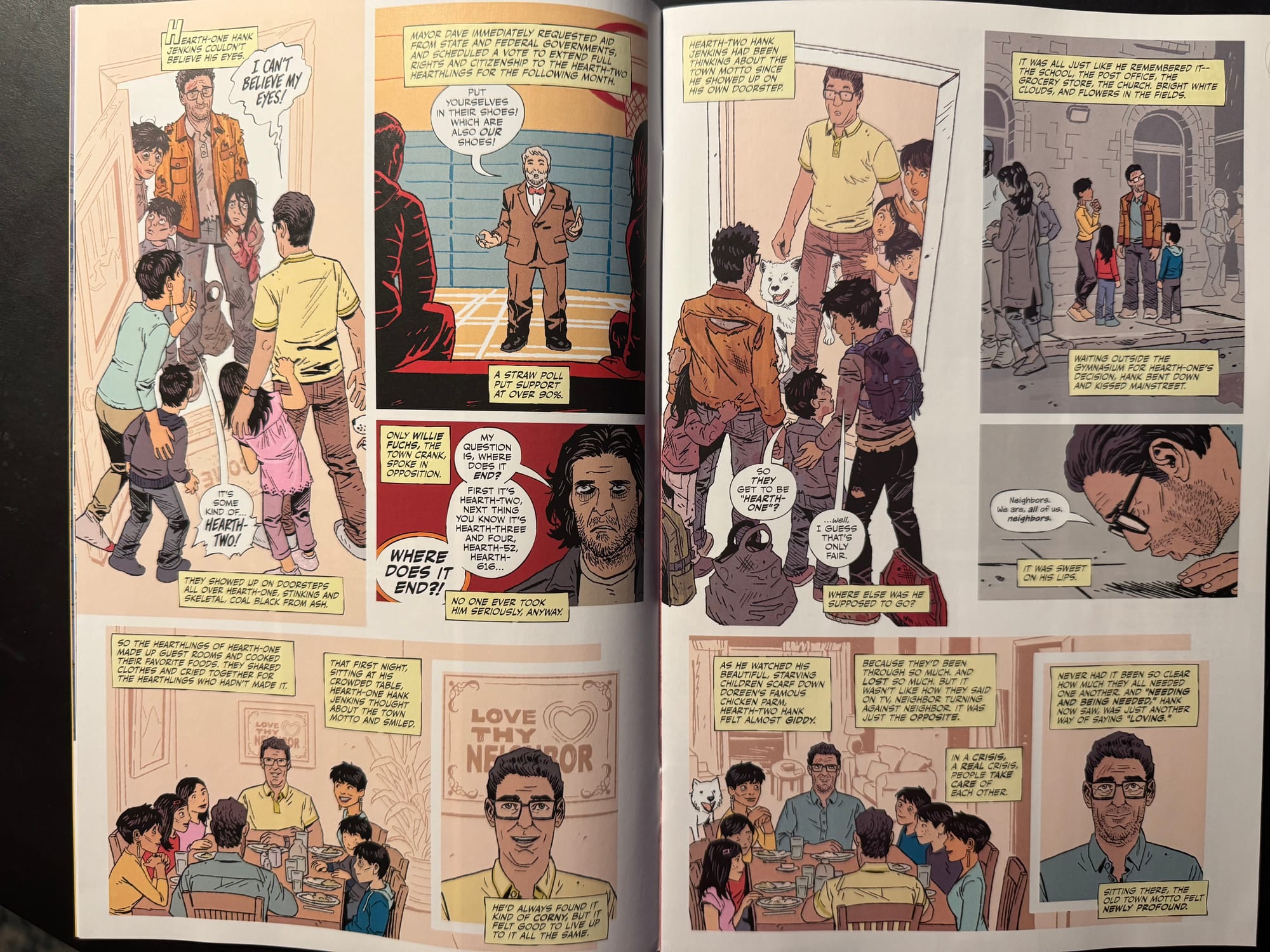
Camp and Zawadzki are calling all of us out. “Love Thy Neighbor” sounds all well and fine but we all fall short of it when it comes to the practice of it. The irony of things is that Hearth-One’s neighbors are themselves in this crisis, or at least alternate universal versions of themselves. You would imagine being able to care for the refugees would be so much simpler when you know them but familiarity doesn’t make it any easier and both Hearths suffer for it.
This comic is not apologetic about being a bit preachy. It’s not like Camp or Zawadzki are trying to hide behind metaphor or symbolism to disguise the fact that they’re writing about our real-life failures to love our neighbors. It’s all there on the page, the challenges that face us as a society and just how inadequately we’re prepared for them on a practical and a personal level. This issue is more a fable or a warning tale about the path we’re on. This series has been exploring these fantastical end-of-the-world scenarios in its first three issues. It then transforms them into personal stories about how we are grappling with this time of uncertainty and losing faith in the world around us.
